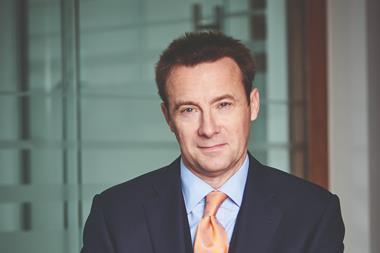As I sit in my car queuing for fuel, I am reminded of the last time I waited not so patiently to fill up on petrol. It was the 1970s, I was about five and my dad was at the wheel. The petrol crisis was just one of many problems filling headlines, along with increasing gas prices, inflation and wages.

The similarities to our current situation are clear. As we shift back into gear post Covid, we know change must happen and is under way, but where that will lead us is hard to pinpoint.
The office sector is a prime example. New demands placed on offices by occupiers are pulling investors in unfamiliar directions and it is increasingly hard to read how the sector will shape up. This has resulted in low investment deal volumes, with sellers unsure of achieving their desired price. Volumes this year to the end of September are £10bn against £13.1bn five-year average for same period. This is against £37.5bn total investment volumes for 2021 so far, against a five-year average of £39.2bn.
A big issue for the office sector is rising building material costs. To attract the right tenants, offices need to offer health and wellness facilities, technology, natural light and outside space. For many, this means large-scale refurbishment. But in today’s climate of uncertainty, there is no guarantee that higher rents down the line will cover rising costs of works.
Energy efficiency standards are also increasingly stringent and investors are under pressure to demonstrate buildings’ environmental credentials. An office building that isn’t grade A, net zero carbon or BREEAM ‘Excellent’ will soon find it hard to attract tenants. The question is: will tenants pay a green premium or opt for a brown discount?
Investment activity is limited for offices outside London, with vendors not confident of achieving notional valuation targets. But if the leasing market recovers in the next three to six months, their prospects will improve. There is, however, strong demand for long, secure income (10 years-plus) office investments outside London from UK and overseas buyers, fuelled by the easing of international travel restrictions.
But limits on travel have not prevented determined buyers from snapping up trophy buildings. Properties in London’s West End have attracted bids from the likes of Zara owner Pontegadea; Ramsbury, who is the family behind H&M; Lifestyle International’s Lau family; and German fund DEKA. Prime West End yields are down to 3.25% and capital values stand at more than £3,000/sq ft. Nonetheless, the broader market is still tight, with volumes at circa 60% of the norm.
Meanwhile, the City and City fringe markets have kicked into action in the past two months, driven by improved occupancy in London offices, which rose to an average of 19.9% last week, from around 16% the week before. This trend and attractive pricing per square foot makes the City office market appealing.
The flight to prime grade-A buildings has never been so noticeable, with City prime yields hardening to a 3.75% record low, stimulated by the huge weight of European capital, particularly from German investors, who like the fact the City is trading at a discount to domestic markets. Deka’s £118m acquisition of Bureau, EC4, at £1,594/sq ft and a 4% yield, is a good example.
As environmental concerns rise up the agenda and firms rethink their use of space, the list of requirements to make an asset perform grows longer and longer, making it hard to predict how the office sector will progress. But like the petrol queues, the fog will soon clear and the wait will end.
Scott Tyler is senior partner at Allsop
































No comments yet